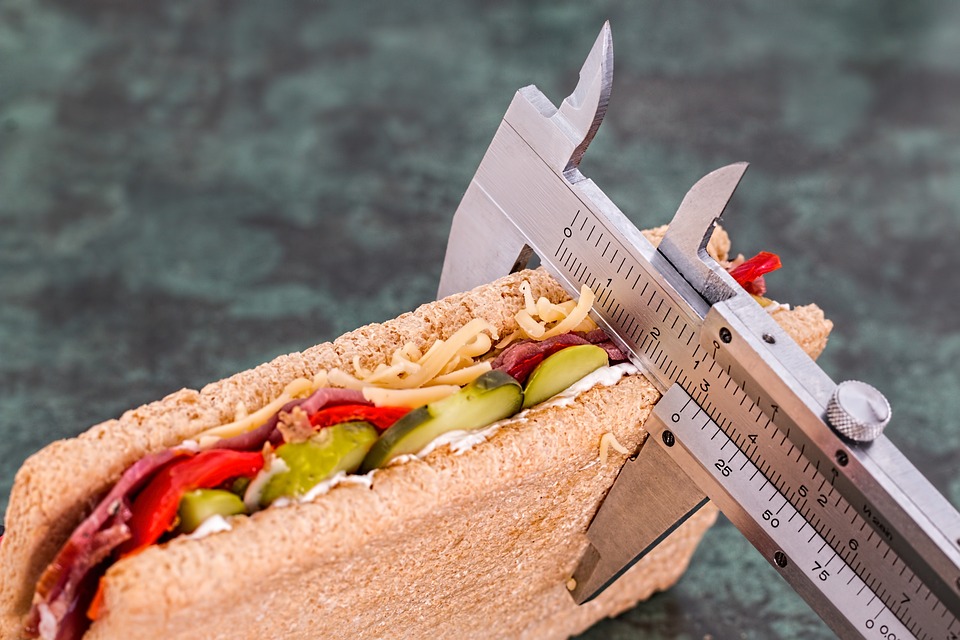When it comes to making major lifestyle changes to your health and fitness habits, the figure on the scale is bound to loom large. It’s true: once you’ve set out a starting weight, a goal weight, and numerical targets for in-between, weight loss soon emerges as an intimidating game of numbers. But what if we viewed weight, and weight loss, differently? Shining a different light on weight loss may be exactly what you need in order to realize your body-related resolutions – so keep reading, and learn how to shift your mindset to expedite your journey to leanness.
 Realize that weight is not the only indicator of healthiness
Realize that weight is not the only indicator of healthiness
Losing weight is invariably an appearance-based goal: chances are that you’ve looked at yourself in the mirror one day, and decided that you’re not aesthetically satisfied with your shape. Embarking upon a self-propelled weight loss program under this negativism frame of mind, however, is ultimately unlikely to yield the best holistic health outcomes.
This is because one of the most common mistakes people make when losing weight is to set appearance-based intentions that extend only into the short-term – only until the achievement of a specific, number-based kilo or pound goal. In the temporary course of reaching that goal, you might be engaging weight loss methods which are neither natural nor sustainable (diet pills, for instance, or over-intense daily workouts).
So rather than focusing on externals and quick-fixes, put your internal health at the center of your weight loss from the beginning. Setting out with the aim of instituting a long-term change to your lifestyle – for the benefit of your gut health, longevity, and happiness first and foremost – then you’re much more likely to stay on the weight loss bandwagon.
Make progress your new measure
Is the scale the best indicator of overall health? We think not – and besides, it’s been scientifically proven in recent years that body weight measures like the BMI calculator aren’t always as scientific as they might seem (after all, muscle weighs more than fat!). So how about starting to measure your body in terms of progress, rather than weight? Along with proving more sustainable in the long run, approaching weight loss in this more intuitive manner will allow you to avoid the dangers that accompany the other side of weight loss: namely, obsession with calories, self-restriction, and the subsequent development of eating disorders like orthorexia and anorexia.
Rather than fixating on the number that the scale returns, then, ditch those masochistic daily weigh-ins in favor of more subtle indicators of progress. These might include the discovery that your jeans are a bit looser, or that you’re suddenly satiated by one glass of wine instead of two. Better yet, your new means of measuring progress might be exercise-related: if you’re a home gym equipment enthusiast, then set about recording your daily workouts, and keeping track of how much more you can do – how much further you can run, how much more you can squat – as the weeks pass.
Figure out the consuming-versus-expending equation
A refusal to acknowledge the caloric value of the foods consumed can be a real psychological block to weight-loss. Though the principle of avoiding straight numbers still stands – there’s no need to strictly input every single calorie – it is essential to have a general idea of the value of the things you consume in, say, steps walked or run. Knowing that a McDonald’s meal can only be balanced by a 10-kilometer run is mental dynamite where self-restraint is concerned!
And every time you’re successful in restraining yourself, or in opting for a healthier option, make sure to reward your efforts, either with a mental pat-on-the-back or with a tangible (though non-food-related) reward. These are the little wins that will keep you from losing steam on the long-term weight loss train.
 Understand that you’re substituting, not cutting-out
Understand that you’re substituting, not cutting-out
With the vast majority of fad diets falsely severing the weight loss journey into the “before” and the “after”, it’s no wonder that we’re prone to dividing weight loss into these two different lands, too. Thinking about yourself prior to weight loss as if totally different to the self that’s endeavoring to shift some pounds now can, however, be an injurious perception, not least because leaving every piece of your old lifestyle in the past can lead to major nostalgia (and temptation).
To make the weight loss process bearable, avoid drawing mental lines that separate the past from the present, the “unhealthy” from the “healthy”. One example is junk food: too often, weight loss newbies institute a diet-wide embargo on all things sweet and tasty and paint their “healthy” diet in opposition to that type of food. Instead of thinking in terms of these binaries, frame your weight loss in terms of substitutions or alterations – you can still eat tasty treats, but perhaps in a different form (try a fat- or sugar- free recipe), or in a smaller quantity (try a handful of M&Ms rather than the whole bag). That way, you won’t feel deprived and ready to throw out the fitness baby with the proverbial bathwater.
Avoid the “less, less, less” attitude
Following the prior note, it’s likely that the prospect of losing weight involves the mental surrendering of things you love – the freedom to eat out, for example, or the luxury of skimping on exercise in favor of the couch’s comfort. But weight loss doesn’t have to equate to a loss in every other part of life: think instead about what you stand to gain. Better day-to-day health, more physical endurance, longer life – these are just some of the upshots of a fit lifestyle.
And remember: you don’t have to eat less – in terms of volume – to lose weight. It may be that you’ve been putting on weight as a result of calorie-dense but low-volume foods; once you’ve switched to more nutrient-rich food stores, you may actually find that you have more food on your plate. With the help of some savvy recipes and innovation, this can be tastier food. So really – what do you have to lose?!
Guest Blogger
Cloe Matheson can be reached at cloe.writes@gmail.com or her website.

